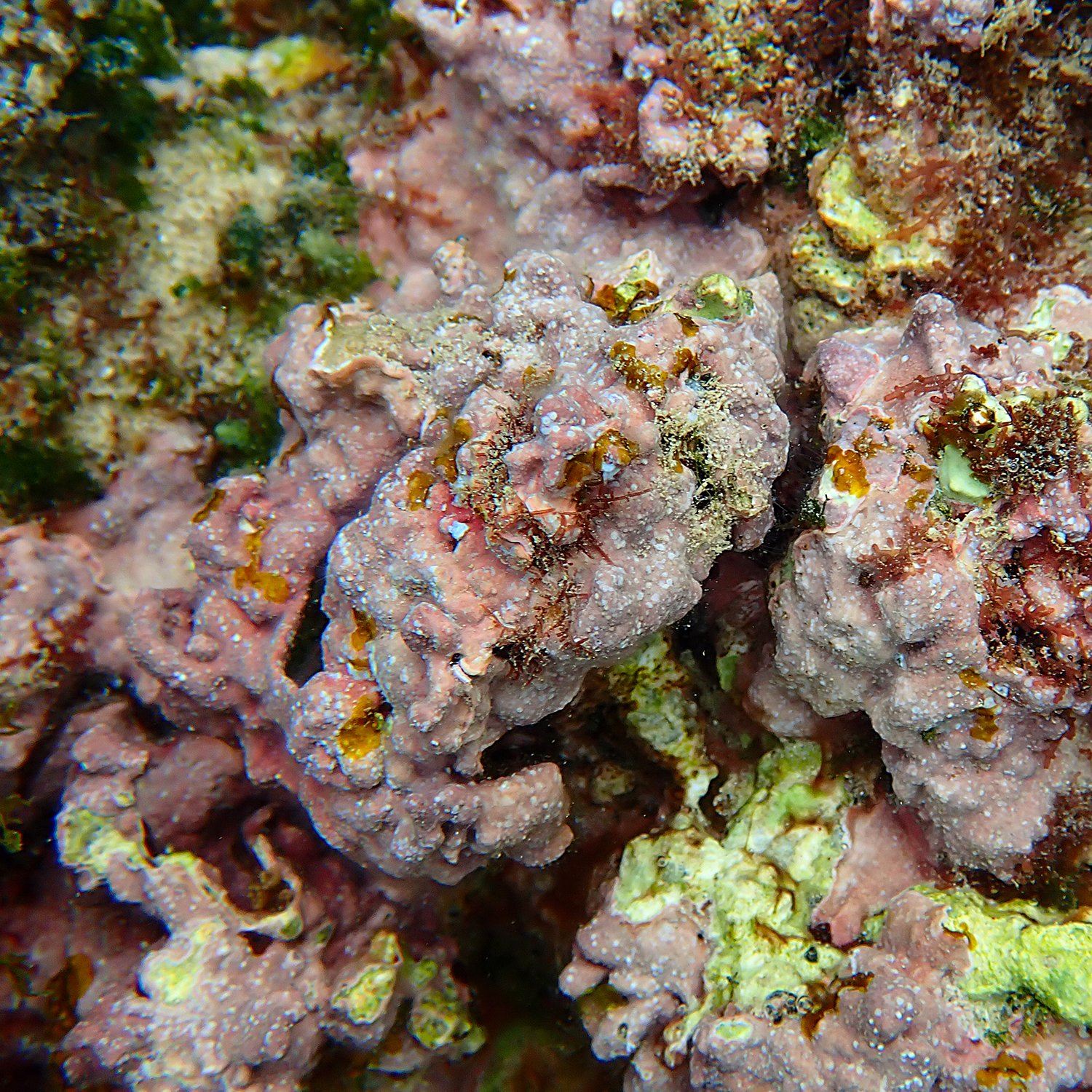An old bottle with crustose coralline algae growing on it
Animal, vegetable or mineral? A coral animal, an algal plant or mineral cement?
What are crustose coralline algae? Are they important? What role do they play on our coral reefs?
To me they look a little like pretty pink lichens, or daubs of pink paint, clinging to rocks and other surfaces on a coral reef, and the more you look for them the more you’ll see. They are everywhere! They grow on rocks, pepples, old shells (see the images, below), and in fact any surface that is underwater, including the dead (and living) coral reef substrate. Which is important, as I will explain.
Coralline algae are not a fleshy green seaweedy type of algae as you would know it. Instead, like corals, they contain calcium carbonate and produce a rock-hard calcareous skeleton, hence their name ‘coralline algae’. There are two types of coralline algae: branching ones (geniculate or articulated), and non-branching (nongeniculate or nonarticulated). It is these non-branching ones I want to look at here.
Often coralline algae get overlooked, and I confess I’d never really paid them much attention until recently, other than to enjoy the fact that they added a dash of pretty pink saturated colour to some of my photos.
So here’s some fast facts about these algae:
So far around 1,600 species of coralline algae have been identified, only one of which is found in freshwater. The rest are all in saltwater marine environments.
They are found all around the world, from the poles to the tropics.[i]
They aren’t all pink. They can be purple, yellow, blue, white and a grey-ish green.[ii]
They grow incredibly slowly, from 0.1 mm to 80 mm a year depending on the climate they are growing in. The warmer the water, the faster they grow.[iii]
Because they don’t move (what is known as ‘sessile’) and they grow so slowly, they can get overgrown by other algae; therefore, they rely on herbivores such as sea urchins, and algae-grazing fish such as parrotfish, to eat these for them and keep them clear and clean.
Crusting coralline algae produce a chemical that encourages the settlement of herbivore invertebrates (those sea urchins again), as well as the settlement of baby coral recruits, which seem to prefer these clean pink surfaces.[iv] ‘Even small specks of crustose coralline algae can induce the settlement of coral larvae on dead reef substratum.’[v]
They are particularly important to the structure of the reef, both by adding to its bulk and, more importantly, acting like glue, or cement, binding the reef together in the face of the pounding surf that reefs can sometimes face. While corals – the show stealers, if you like – may create the main structure of the reef, they rely on the humble lifeform of the crusting coralline algae to grow over and in between them in order to hold the whole shebang together.[vi] And as I mentioned above, this is important. As corals die and their skeletons turn to rubble, the crusting coralline algae will grow over them and around them cementing them all together and allowing new corals to grow.
There is a lot more to these coralline algae. For a humble lifeform, they really pack a punch. For example:
they are used in Great Britain and France, in particular, as a soil conditioner
historically, they were ground up and used as a worming treatment (but not these days)
today they are used in the preparation of dental bone implants
they are used as a food additive for cattle and pigs
they are in hot demand for the marine aquarium trade – because they are important to the health of the reef and they look pretty.[vii]
Who would have thought?
Further reading: Research good news for coralline algae, but not necessarily for reefs, The Conversation.




